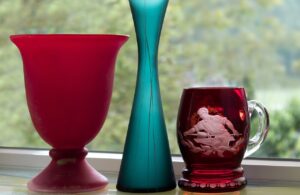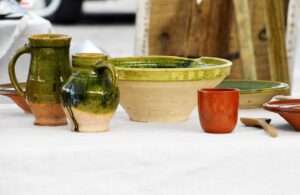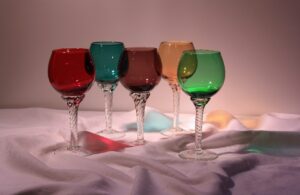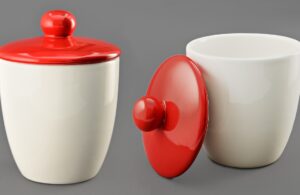Whether your collection of teapots is glass or ceramic, sand has played a large role in producing these beautiful objects. Sand is used in basic glass making as well as manufacturing glazes for ceramics. It is combined with other components in varying amounts to produce the desired effect when heated to high temperatures. The type of product produced with sand depends upon the amount of sand and other ingredients used. Manufacturers generally specialize in either glass making or producing glazes.
When melted, sand forms glass. Teapots made of glass are a combination of silica sand, limestone and soda ash. These three components are the basis of all clear glasses. When melted in a high heat furnace, they produce clear glass that can be shaped into items such as teapots. If colored glass is desired, small amounts of other minerals are added. The amounts and types of minerals are generally closely guarded secrets of the various glass makers who produce them.
Glazes for ceramics have a wide range of properties. Many glazes are commercially manufactured and registered. These glazes produce a shiny or matte finish depending on the mix of ingredients. Silica sand plays a large role in these ingredients because it is purer than many types of sand. It is also widely available in different parts of the world, easy to mine and is an inexpensive material. Glaze manufacturers use it to assure their glazes melt at the correct temperature to produce the result advertised.
For centuries, sand has been a component in both the glass and ceramics industries. Modern manufacturing processes have added a variety of other components to achieve new results, but sand is still an ingredient used today. Its ability to melt and form beautiful pieces of glass is highly prized by manufacturers and collectors alike.


















